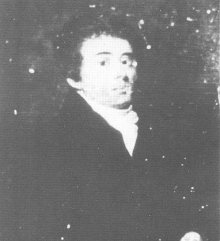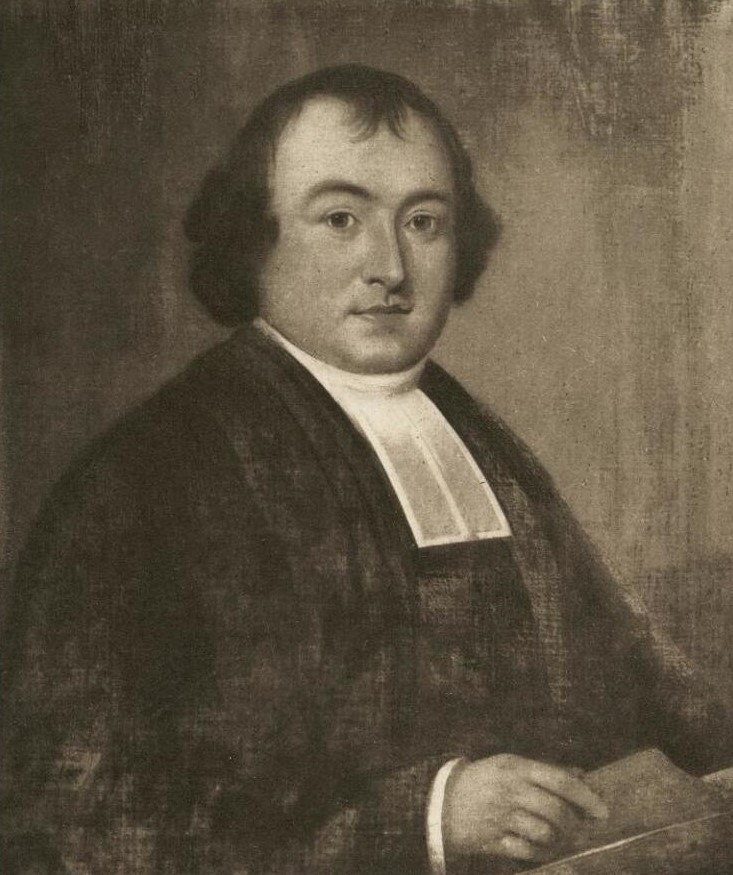THE SUNDAY SCHOOL IN WALES IN THE 19th CENTURY
In the 18th century it was religion and charity that promoted most of the education in Wales. Church organisations and charitable institutions, along with a large number of private schools, were the main providers. The Sunday Schools were significant in this provision and very popular since they used the Welsh language, reflected the Welsh nonconformist beliefs and traditions, were available free of charge to all ages and did not interfere with everyday work.

Courtesy Wikimedia Commons
Carmarthenshire played an important part in the education of the poorer people in Wales since it was the birthplace of Griffiths Jones (1683-1761) and Thomas Charles (1755-1814). Jones initiated the ‘circulating school’ for the rural parishes where a school building was not feasible and where money could be spent on teachers who would hold classes for three months in a parish vestry or other available building. Charles continued to advance the circulating school but is best known for the development of the Sunday School movement, building on the work of Robert Raikes in England but including adult classes and using the Welsh language. The movement grew rapidly with the aims of learning reading through the Bible and learning a catechism by rote.
The result of the work of both these extraordinary men was that it enabled the majority of people in Wales to read Welsh and to be able to discuss theology. The Sunday schools boosted Nonconformity and in the 19th century were a feature of the chapel as a centre of social activity. Very often those who had been scholars in the circulating schools became enthusiastic teachers in the Sunday Schools. Most would agree that the first Sunday School in Wales was established in 1785. It initially met opposition in many quarters including among those who regarded teaching as secular work and breaking the Sabbath law. But soon they became really popular and multiplied when the most intelligent and influential men supported Charles’ work.

Courtesy Wikimedia Commons
Charles prepared three books to guide those in the new movement: the first was the Sillydd or spelling book which was a graduated series of lessons for learning the Welsh language, with practical hints on moral behaviour; the second was the Hyfforddwr , or ‘Instructor’ and a question and answer catechism on the Christian doctrines; the third was an exposition of the Ten Commandments.
One of the distinguishing features of the Welsh Sunday School, and a remarkable achievement of Thomas Charles, was its ‘all age’ organisation. The ‘senior class’ provided a continuation of instruction absent in the English system and needed superior and more knowledgeable teachers. It was not uncommon to see grandparents discussing theological issues, such as ‘Justification by Faith’ in one class, or even learning to read, and the grandchildren in another part of the room learning the alphabet.
However, when it comes to teaching methods what we would regard as outdated and inefficient was deemed to be progressive and in line with current trends. Teaching was still mainly mechanical and the children taught in large groups with the aim simply of reading the Bible and thereby imparting knowledge of the scriptures. A standard approach used questioning whole groups who would all come back with the same answer – what has been described as “the noise of many waters.” This catechetical approach enabled children and adults to memorise large sections of the Bible which would be recited in the Sunday School or in gatherings of a number of schools where there would be competition between them. In one account a little girl aged 5 is reported to have recited 100 chapters of the Bible.
There were nine Sunday Schools in the Pembrey parish mentioned in the Blue Books in the middle of the 19th century.
1. The largest was Rehoboth Welsh Independent Chapel, Five Roads (1827) with 110 attendees and 54 above the age of 15. 63 were able to read the scriptures. There were 15 male teachers.
2. Bethel Welsh Calvinistic Methodist, Pembrey (1812) had 97 of which 40 could read the scriptures. There were 6 male and 4 female teachers.
3. Bethlehem Particular Baptist, Pwll (1834) had 92 scholars of which 38 were able to read. There were 6 male teachers.
4. Jerusalem, Burry Port (1812) had 76 scholars and 30 could read. There were 10 male and 2 female teachers.
5.Ebenezer (Hermon) (1837) had 36 scholars with 10 able to read. It had 3 male teachers and 1 female.
6.Gwscwm Baptist (Tabernacle) (1839) had 30 scholars with 8 male and 4 female teachers. 12 scholars were able to read.
7.Pencaerdrysi Pinged (1836) had 25 children under 15 with 1 female teacher. 12 were able to read.
8. Sardis Trimsaran (1833) had 70 scholars of which 48 were able to read. There 9 male and 2 female teachers.
9. Church Vestry Room, Pembrey (1838) had 17 scholars and 2 male teachers. 9 were able to read.
In most of the Sunday Schools listed the teaching was in both English and Welsh and generally at least a third of the pupils were described as being able to read. Bibles and ‘elementary books’ were used for reading.
Two other Sunday schools in the district are listed in the 1851 religious census. These are: 35 scholars at the Pembrey parish church (St Illtyd’s); Carmel Welsh Independent, Pembrey (1827) had 20 scholarsa.m. and 30 p.m.
There are four Sunday Schools in the Llanelly Parish which are described in more detail in the Blue Books.
Capel Sion: A class of six boys, aged from 6 to 30, were reading revelation chapter 16. The questioning was unrealistic and often inconsequential -they did not know the meaning of ‘vial’ or ‘wrath’ and could not say whether angels are ever seen in the world now. Three of the six could read with ease and one aged 12 could not read at all. Another class of four boys was reading Isaiah chapter 18-they did not know what a prophet was but showed a real understanding of the Trinity. They had heard of Moses but did not know his significance for the Jews and had little knowledge of the Commandments.
Capel Als: The account described how the school began with him and a prayer followed by calling the register of teachers. Many of them were absent at the copperworks, a permanent cause of absence every Sunday. Each Bible class read the Scriptures through and there was no general categorising of the whole school in this reading. In one class of 15 there were four colliers, one farmer’s son, two carpenters, one of Drury man, two clerks in works, one shopkeeper, one very old man, two lads and one not known. Five scriptural maps were hanging from the pulpit in front of the class. They read John chapter 5 with ease and had prepared from commentaries which they owned. They were able to answer the teachers questions and were ‘interested and diligent’. The school was described as being of little use for the instruction of the young and the classes were badly arranged to ensure the attention of the scholars. The school was not well off for English teachers and some of the parents whose children went to a day school objected to their being taught Welsh on Sundays. In none of the juvenile classes were there any indication of teachers questioning the children.

Capel Newydd: The school began at 1030 after morning service and closed at 1215. There were 16 Scripture and 17 elementary classes, with the latter taught both individually and collectively. Questioning of the scholars took place in all the Scripture classes at the end of the school and lay preacher from the congregation questioned the scholars with accurate responses on topics such as Adam and Eve, the person and life of Jesus, the three persons of the Trinity.
Wesleyan Sunday School: The school is described as conducted on a good system and everything carried on regularity. Wesleyan elementary books are used by the junior classes and the Scripture classes use the lessons of the London Sunday school union. The lessons of the day were based on Genesis chapter 7 and John’s Gospel chapter 1. The scholars for the most part read well and those who understood English and said the questions with ‘clearness and precision’. A committee member of the Sunday School union questioned the scholars on aspects of the creation -for example, the order of creation, man made in God’s image et cetera. ‘The school ended with a hymn and a short prayer and the teachers took their classes out by rotation in a very orderly manner’.
Although the commissioners of the ‘Blue Books’ in their report of 1847 were brutal in their condemnation of the schools of Wales they had some good things to say about the Sunday Schools. Although they may have lost their importance today and never adequate in providing a general education, they were regarded as ‘real fields of mental activity’ yet also seen as limited largely to reading the scriptures in a repetitive way and moral and religious instruction. They were never a substitute for the day school, although they were recognised as the major force for literacy in the Welsh language.
GRAHAM DAVIES December 2021
